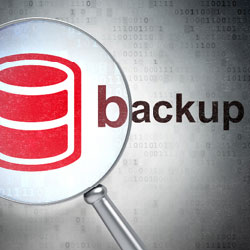Better Backup for Manufacturers
Cloud and virtualization-specific backup options help overcome the limitations of traditional solutions in manufacturing companies.
 Data backup is arguably the most critical function in IT, but it continues to be a frustrating and problematic process for most organizations. Manufacturing companies in particular create and store large volumes of business-critical data, from engineering drawings and product documentation, to supply chain and accounting information, to payroll. As a result, manufacturers must ensure that data is protected and can be restored in an emergency.
Data backup is arguably the most critical function in IT, but it continues to be a frustrating and problematic process for most organizations. Manufacturing companies in particular create and store large volumes of business-critical data, from engineering drawings and product documentation, to supply chain and accounting information, to payroll. As a result, manufacturers must ensure that data is protected and can be restored in an emergency.
But while backup products and technologies are continually evolving, industry surveys repeatedly reveal that organizations of all sizes are encountering significant backup issues related to cost, complexity and reliability. Too often, backup processes have not kept pace with growing data volumes, making it difficult to complete backups within the available window. Increased adoption of server virtualization and cloud-based services have only exacerbated the problem.
“It’s a different world for IT managers today, and data backup … is more complex than ever,” said Eric Burgener, IDC research director. “Data sizes and types continue to evolve, as does the number of servers and operating systems each company uses. This leads to a host of new challenges IT managers face to make sure they can back up and protect their data and restore operations quickly.”
The Game Changer
Backup was a reasonably straightforward affair in the days when applications ran on dedicated servers. Once an application triggered a backup process, most of the server’s memory, storage and CPUs were available to the backup application. Server virtualization changed all that by allowing multiple virtual machines (VMs) to run on a single piece of hardware. Resource contention becomes a serious issue when an organization is simultaneously backing up physical, virtual and cloud environments featuring consolidated workloads and extreme data redundancy. If a hypervisor runs out of memory, it can cause a server crash that can bring down multiple applications.
At the same time, there is more data to be backed up and backups need to be completed more frequently to meet recovery point objectives. The problem becomes exacerbated as the environment scales to hundreds or thousands of VMs sharing a common resource pool. Agent-based backup solutions place a significant burden on host servers and make it difficult if not impossible to complete backups within the available window.
Virtualization-aware, host-level backup is far superior to agent-based solutions, but it presents a separate set of issues. These solutions typically create image-level backups that makes it easier to recover an entire VM, but file-level recovery is at least a two-step process.
Purpose-Built Solutions
Best-of-breed backup solutions for virtualized environments offer file-level restore as well as replication rollback capabilities, protecting VMs from both hardware failure and software corruption. IT can recover individual items from any virtualized application, on any operating system, without additional backups, agents or software tools.
Virtualization-specific backup and replication gives organizations greater confidence to virtualize enterprise applications such as CRM, ERP and email systems. The ability to restore an entire VM from a backup file in minutes means that users remain productive while IT troubleshoots the issue.
Virtualization-specific solutions with synthetic backup capabilities eliminate the need to run resource-intensive full backups. After an initial full backup, only changes are stored, and a synthetically compiled full backup is available for fast restore at any time. This technique reduces backup time and bandwidth utilization. Incremental changes are tracked to allow for rollback in case of software failure or corruption.
With VM replication, copies of mission-critical VMs are mirrored to a spare server and kept in the ready-to-start native format. This capability enables cost-effective disaster recovery for mission-critical applications and data. Should a failure occur, IT can run a VM directly from a compressed and de-duplicated backup file on regular backup storage, either in production or an isolated virtual lab.
The Cloud Option
Under certain conditions, shifting data backup to a cloud provider can be a good option. Cloud-based backup requires no capital investment for equipment and makes backup an operational cost. Software encrypts data for security purposes and automatically backs it up to remote servers. The service provider maintains and monitors the data backup plan, and because data is saved at a different location, it’s always accessible.
Restoring large amounts of data from the cloud can be time-consuming, however. Hybrid solutions help avert such performance issues by keeping primary storage onsite on disks or NAS appliances and moving secondary storage and data backup to the cloud.
Although data backup is critical to any organization, the process has become a pure pain for most IT departments. Virtualization and cloud services have fundamentally changed the process, making it nearly impossible to manage with traditional backup solutions.
Virtualization-specific backup solutions with incorporated de-duplication and VM replication capabilities have become the gold standard — but there are other good options, depending on organization’s specific requirements. For a smaller organization with a modest data footprint, a hybrid cloud backup strategy can deliver compelling economic and management benefits.





